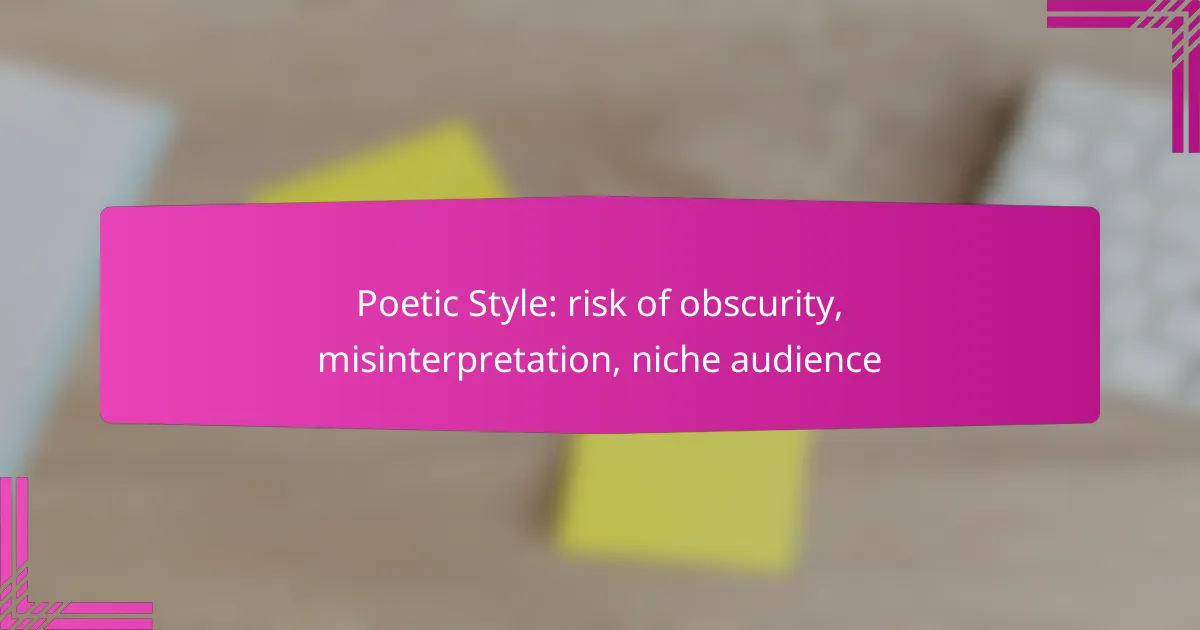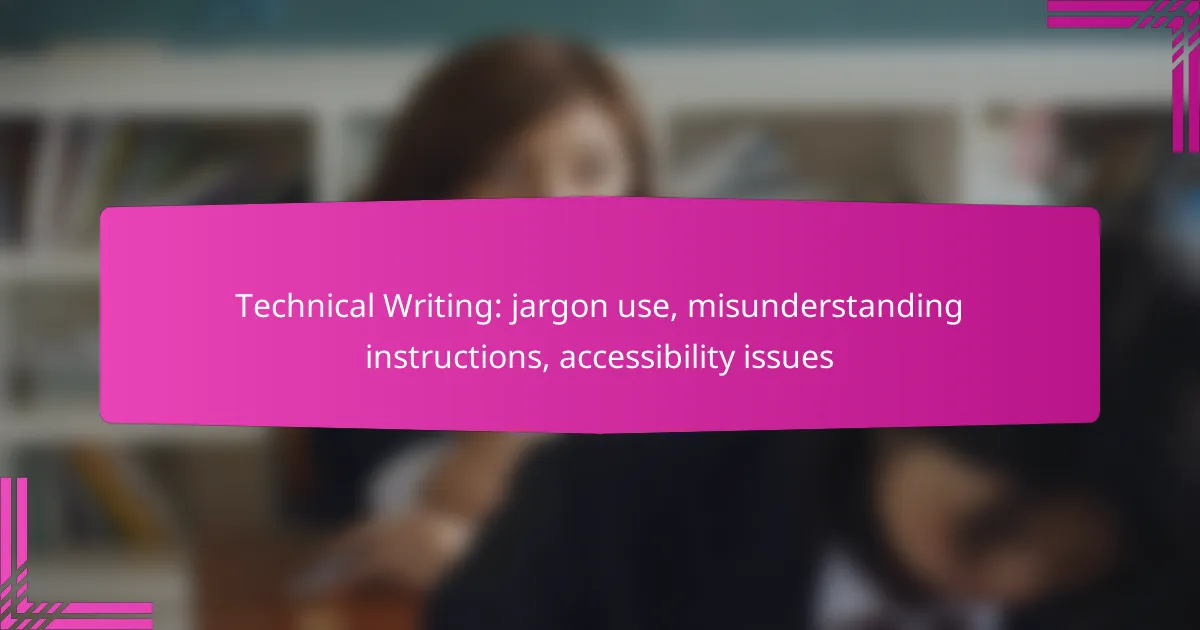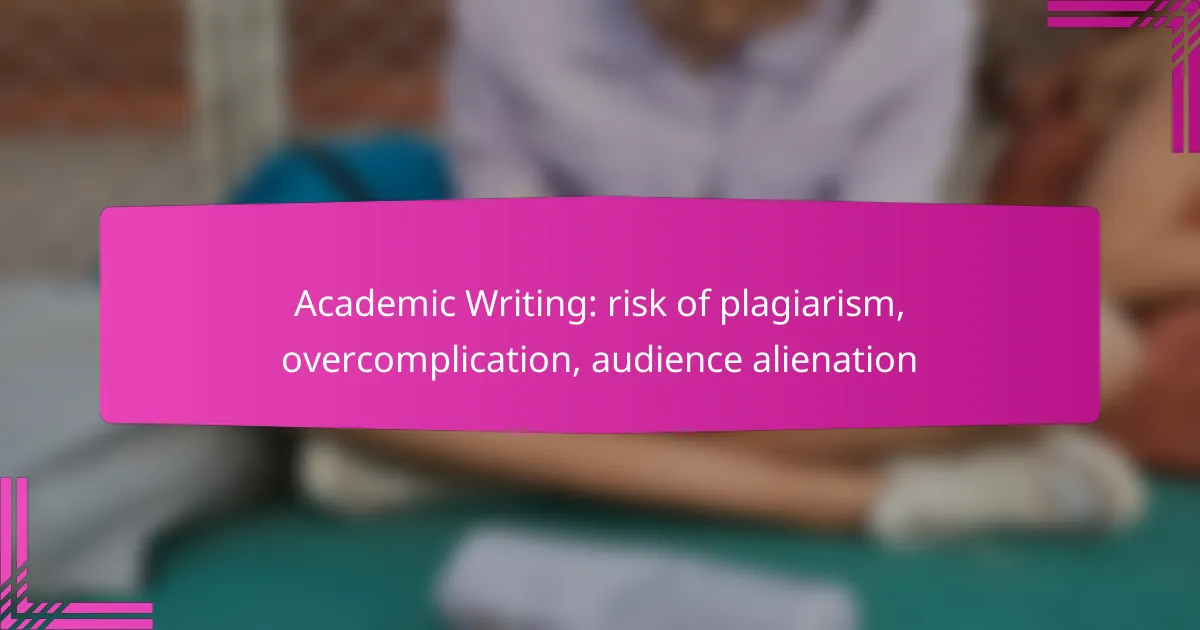Poetic style plays a crucial role in determining how a poem is received and understood by its audience. While complex language and nuanced themes can enrich a poem’s depth, they also carry the risk of obscurity and misinterpretation, potentially alienating readers. Striking a balance between artistic expression and accessibility is essential for poets aiming to connect with a broader audience.
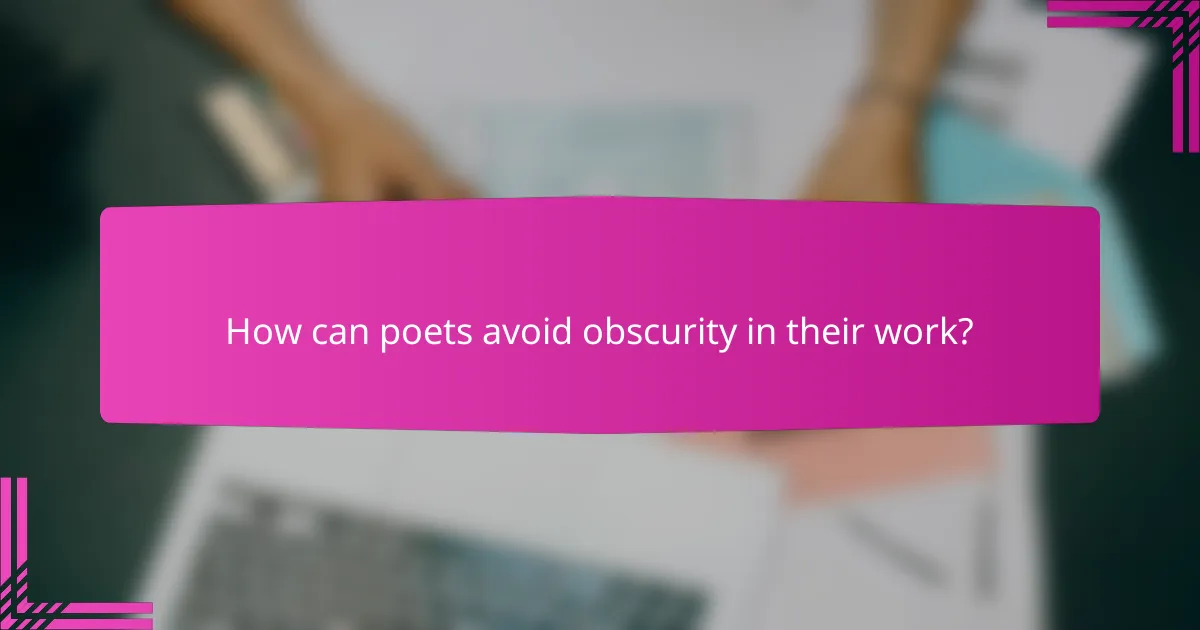
How can poets avoid obscurity in their work?
Poets can avoid obscurity by using straightforward language, relatable themes, and by reaching out to a wider audience. These strategies help ensure that their messages resonate clearly and are easily understood.
Use clear language
Clear language is essential for effective communication in poetry. Poets should aim to use simple, direct words and avoid overly complex vocabulary that may confuse readers. For example, instead of using obscure metaphors, a poet might choose vivid imagery that conveys emotions or ideas in a straightforward manner.
Additionally, poets can benefit from reading their work aloud to identify any phrases that may sound convoluted or unclear. This practice helps to refine their language and enhance overall clarity.
Incorporate relatable themes
Relatable themes can significantly enhance a poem’s accessibility. By focusing on universal experiences such as love, loss, or nature, poets can create connections with their audience. Themes that resonate with everyday life tend to engage readers more effectively.
Poets should consider drawing from personal experiences or common societal issues, as these can evoke empathy and understanding. For instance, writing about the challenges of modern life or the joy of simple moments can make poetry feel more relevant and inviting.
Engage with a broader audience
To reach a wider audience, poets should consider the platforms where their work is shared. Utilizing social media, poetry readings, and literary magazines can help broaden their exposure. Engaging with diverse communities can also provide valuable feedback and foster connections with potential readers.
Moreover, poets can experiment with different styles and formats, such as spoken word or collaborative projects, to attract various demographics. This adaptability can help ensure that their work appeals to a range of tastes and preferences, ultimately reducing the risk of obscurity.
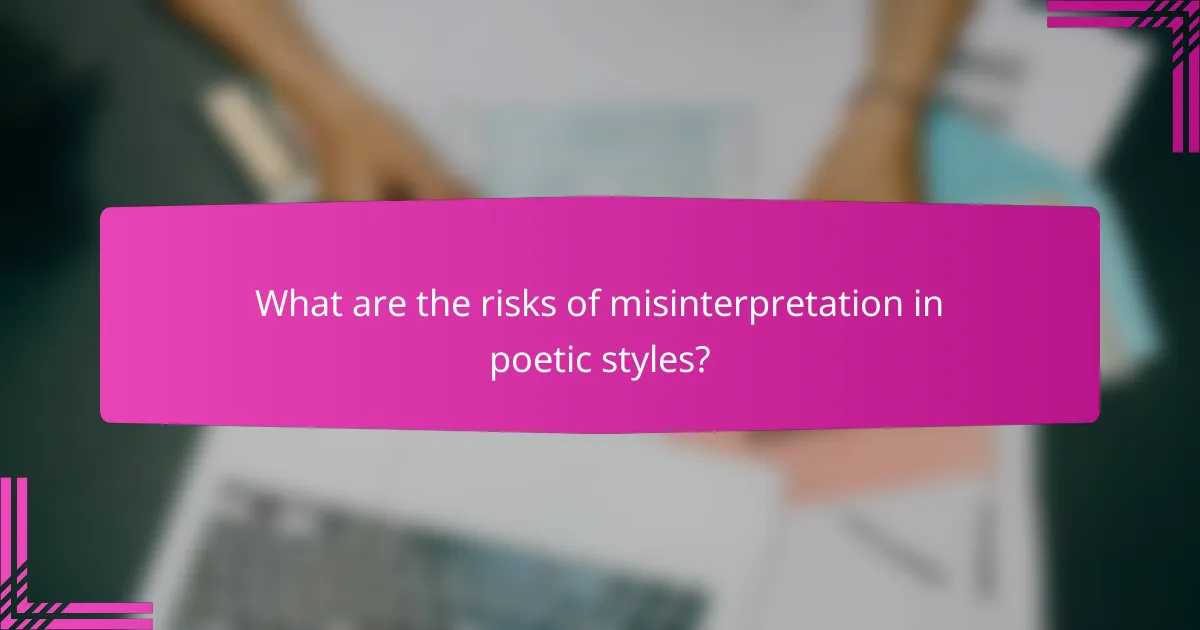
What are the risks of misinterpretation in poetic styles?
The risks of misinterpretation in poetic styles arise from the inherent complexity and nuance of language used in poetry. Poets often employ various techniques that can lead to different interpretations, which may alienate some readers or create confusion.
Ambiguous language
Ambiguous language in poetry can lead to multiple interpretations, making it challenging for readers to grasp the intended meaning. For instance, a phrase like “the light fades” could refer to the end of a day, a relationship, or even a metaphorical loss. This ambiguity can enrich the poem but may also frustrate those seeking clarity.
To mitigate misinterpretation, poets might consider using more precise language or providing context that guides readers toward a specific interpretation. However, this could also limit the poem’s emotional depth and resonance.
Cultural references
Cultural references in poetry can create barriers for readers unfamiliar with specific traditions or historical contexts. A poem that draws on local folklore or historical events may resonate deeply with some audiences while leaving others puzzled. For example, references to the Greek myth of Orpheus may be lost on readers without a background in classical literature.
Poets should weigh the benefits of using cultural references against the potential for exclusion. Providing footnotes or context can help bridge the gap, but it may also disrupt the flow of the poem.
Complex symbolism
Complex symbolism can enrich a poem but also complicate its interpretation. Symbols can carry multiple meanings, and their significance may vary across different cultures or personal experiences. For instance, a rose might symbolize love for some, while for others, it could represent beauty or transience.
To avoid misinterpretation, poets can consider grounding their symbols in more universally understood concepts or providing subtle hints within the text. However, overly simplifying symbols may dilute their impact and emotional weight.
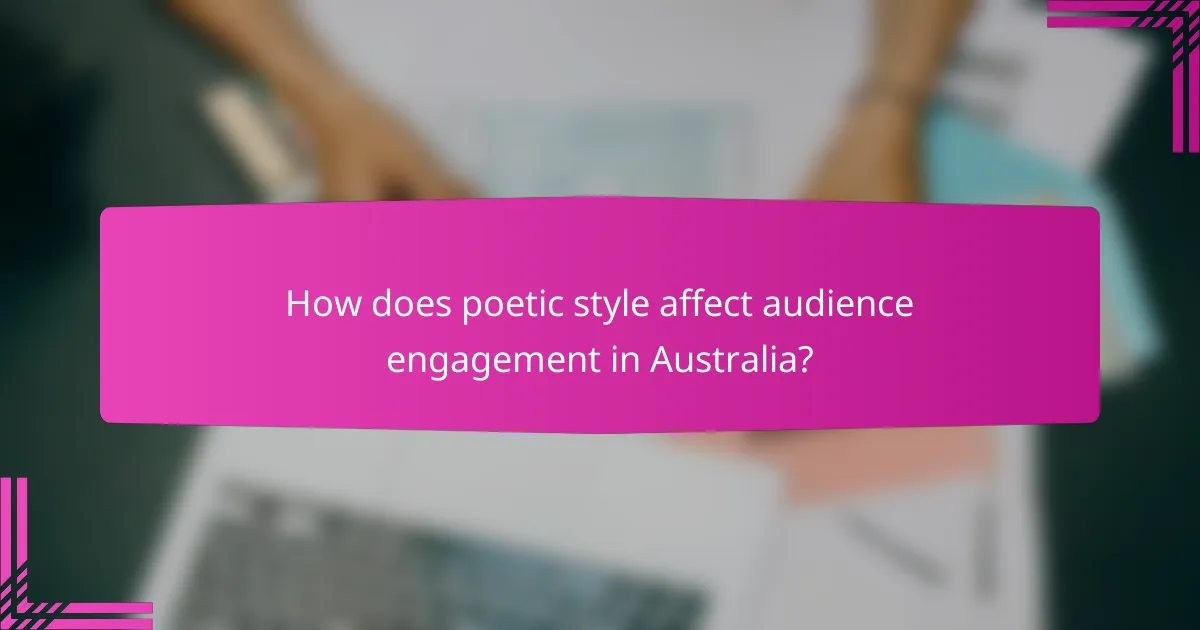
How does poetic style affect audience engagement in Australia?
Poetic style significantly influences audience engagement in Australia by shaping how readers interpret and connect with the text. A style that resonates with local culture and contemporary issues can enhance relatability, while obscure language may alienate potential readers.
Influence of local culture
Local culture plays a crucial role in how poetry is received in Australia. Poets who incorporate Australian themes, landscapes, and vernacular can create a stronger bond with their audience. For instance, referencing iconic Australian symbols like the bush or coastal life can evoke a sense of familiarity and pride.
Moreover, cultural events and historical contexts, such as Indigenous heritage or national celebrations, can enrich poetic content, making it more engaging for local readers. Understanding these cultural nuances allows poets to craft works that resonate deeply with their audience.
Accessibility of language
The choice of language in poetry affects its accessibility to a broader audience. Poets using clear, straightforward language are more likely to engage readers who may not be familiar with complex literary devices or obscure references. For example, employing everyday language can make themes more relatable and understandable.
Conversely, overly intricate or abstract language can lead to misinterpretation and disengagement. Poets should aim for a balance between artistic expression and clarity, ensuring their work is approachable while still retaining depth.
Connection to contemporary issues
Connecting poetry to contemporary issues can significantly enhance audience engagement. Topics such as climate change, social justice, and mental health resonate with many Australians today. By addressing these themes, poets can foster a sense of relevance and urgency in their work.
Additionally, engaging with current events allows poets to tap into collective sentiments, making their poetry a platform for dialogue and reflection. This connection not only attracts readers but also encourages them to reflect on their own experiences and perspectives in relation to the issues presented.
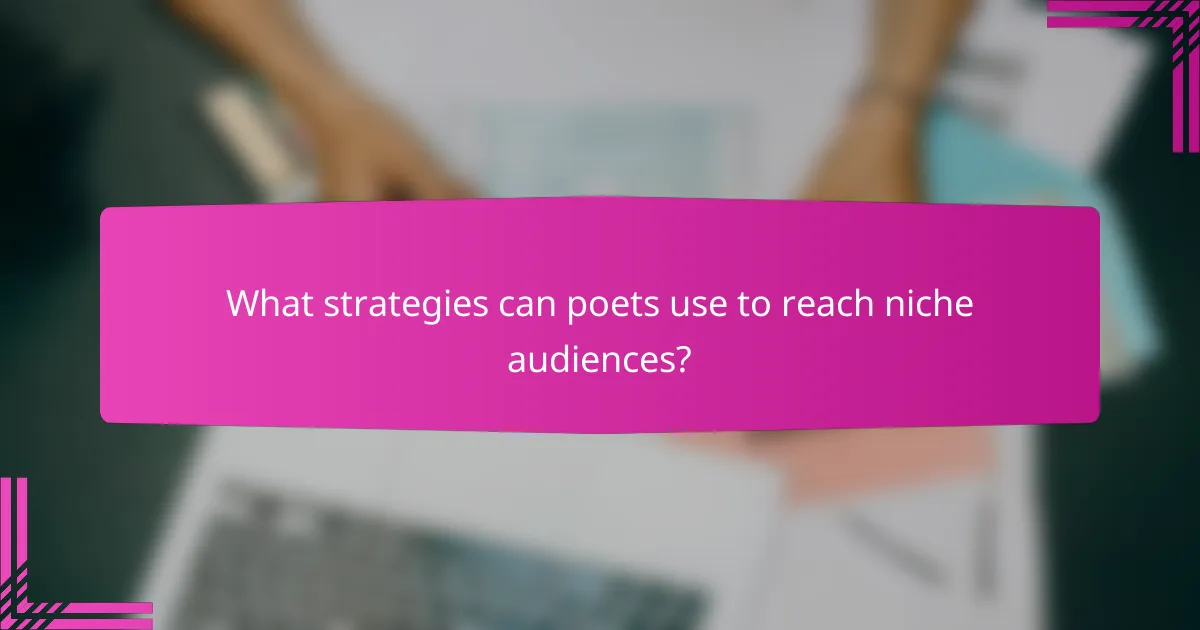
What strategies can poets use to reach niche audiences?
Poets can effectively reach niche audiences by employing targeted marketing strategies, collaborating with specialized platforms, and participating in literary festivals. These approaches help connect with specific groups that appreciate particular styles or themes in poetry.
Targeted social media marketing
Utilizing targeted social media marketing allows poets to engage directly with niche audiences. By focusing on platforms like Instagram, Twitter, or TikTok, poets can share their work, interact with followers, and use hashtags that resonate with specific communities.
Creating content that highlights unique aspects of their poetry, such as themes or styles, can attract the right audience. For instance, a poet focusing on environmental themes might engage with eco-conscious groups through relevant posts and discussions.
Collaborations with niche platforms
Collaborating with niche platforms can significantly enhance a poet’s visibility. This could involve guest posts on specialized blogs, contributing to literary magazines that cater to specific genres, or partnering with online poetry communities.
For example, a poet who writes about urban life might collaborate with a platform dedicated to city culture, sharing their work with an audience that appreciates that context. Such collaborations can lead to increased readership and deeper connections with fans.
Utilizing literary festivals
Participating in literary festivals is an effective way for poets to reach niche audiences. These events often attract specific demographics interested in particular genres or themes, providing a targeted audience for poets.
Poets should seek out festivals that align with their style and themes, such as spoken word events or those focused on contemporary poetry. Engaging in readings, workshops, or panel discussions can enhance visibility and foster connections with like-minded individuals.
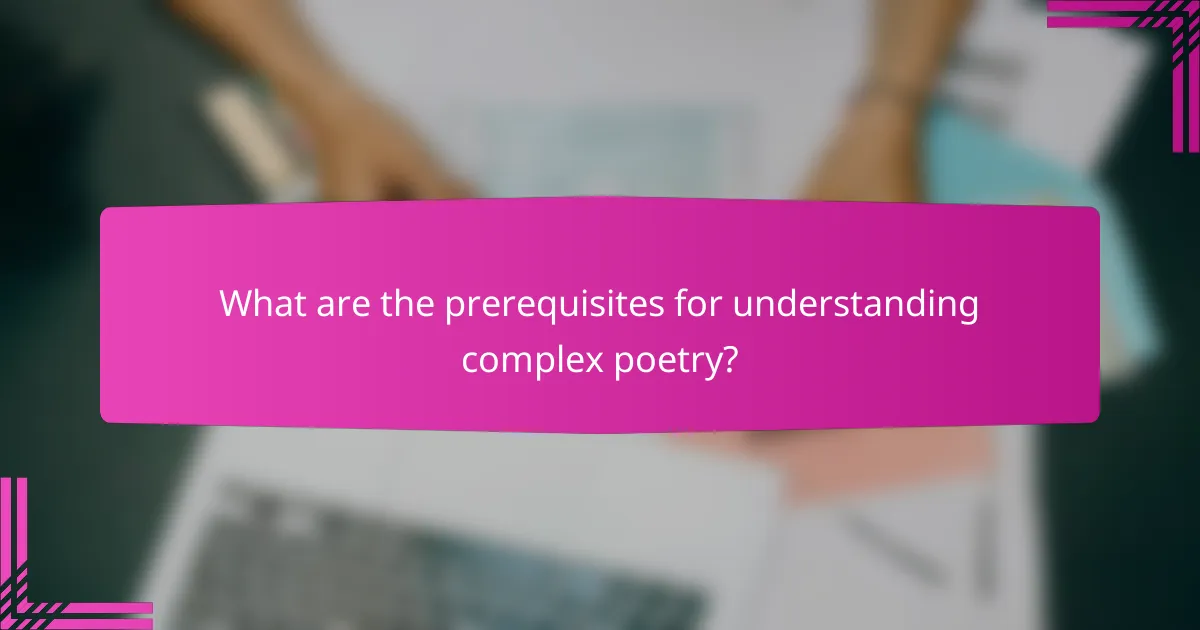
What are the prerequisites for understanding complex poetry?
Understanding complex poetry requires a blend of familiarity with poetic devices, knowledge of historical context, and engagement with literary criticism. These elements help readers navigate the nuances and layers of meaning often found in intricate poetic works.
Familiarity with poetic devices
A strong grasp of poetic devices such as metaphor, simile, alliteration, and enjambment is essential for interpreting complex poetry. These tools shape the poem’s rhythm, tone, and imagery, influencing how the reader perceives its meaning.
For instance, recognizing a metaphor can unlock deeper interpretations of a poem’s themes. Readers should familiarize themselves with common devices and practice identifying them in various works to enhance their understanding.
Knowledge of historical context
Historical context provides crucial insights into a poem’s themes, language, and references. Understanding the time period in which a poem was written can reveal societal norms, cultural influences, and personal experiences that shape the poet’s work.
For example, a poem written during a time of political upheaval may reflect the tensions and struggles of that era. Readers should research the poet’s background and the historical events surrounding the poem to gain a richer understanding.
Engagement with literary criticism
Engaging with literary criticism allows readers to explore various interpretations and analyses of a poem. Critics often provide valuable perspectives that can illuminate aspects of the work that may not be immediately apparent.
Readers can benefit from exploring different critical approaches, such as feminist, Marxist, or psychoanalytic criticism. This engagement encourages a more nuanced understanding of complex poetry and helps avoid misinterpretations.

How can poets balance artistic expression and audience comprehension?
Poets can balance artistic expression and audience comprehension by using clear imagery and relatable themes while maintaining their unique voice. This involves being mindful of language choices and the potential for misinterpretation, ensuring that the work resonates with a broader audience without sacrificing creativity.
Feedback from workshops
Participating in poetry workshops provides valuable feedback that can enhance both artistic expression and audience understanding. Poets can share their work with peers and receive constructive criticism, which helps identify areas of obscurity or confusion. Engaging with diverse perspectives can illuminate how different readers interpret the same piece.
When seeking feedback, poets should focus on specific aspects of their work, such as clarity of imagery or emotional impact. This targeted approach allows for more actionable insights and helps refine the poem to better connect with its intended audience.
Iterative writing process
An iterative writing process encourages poets to revise and refine their work, balancing creativity with clarity. By drafting multiple versions of a poem, writers can experiment with different language and structure, assessing how each change affects audience comprehension. This method fosters a deeper understanding of how to convey complex ideas effectively.
During revisions, poets should consider reading their work aloud to gauge its flow and impact. This practice can reveal areas that may be confusing or overly abstract, allowing for adjustments that enhance both artistic expression and accessibility for readers.
